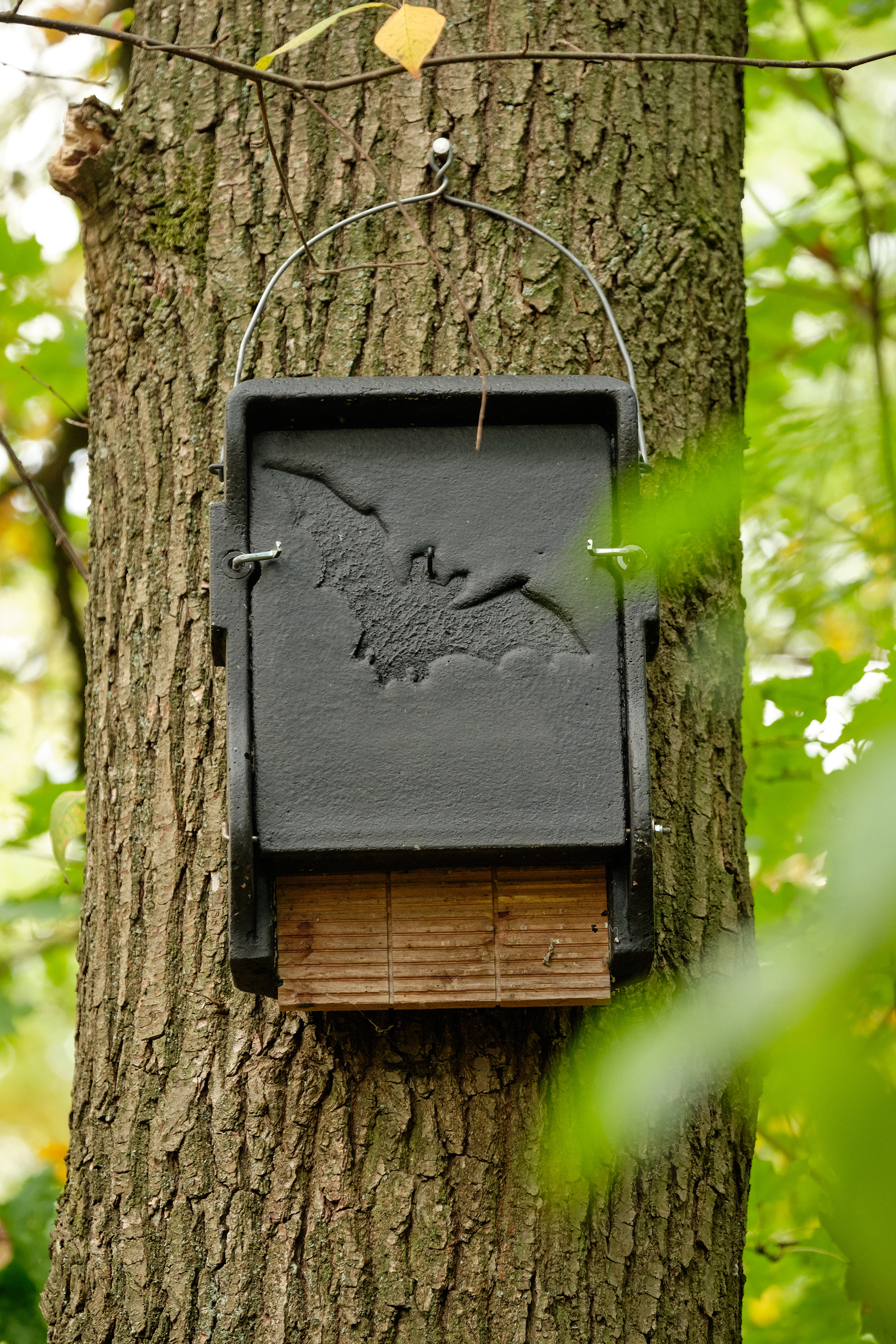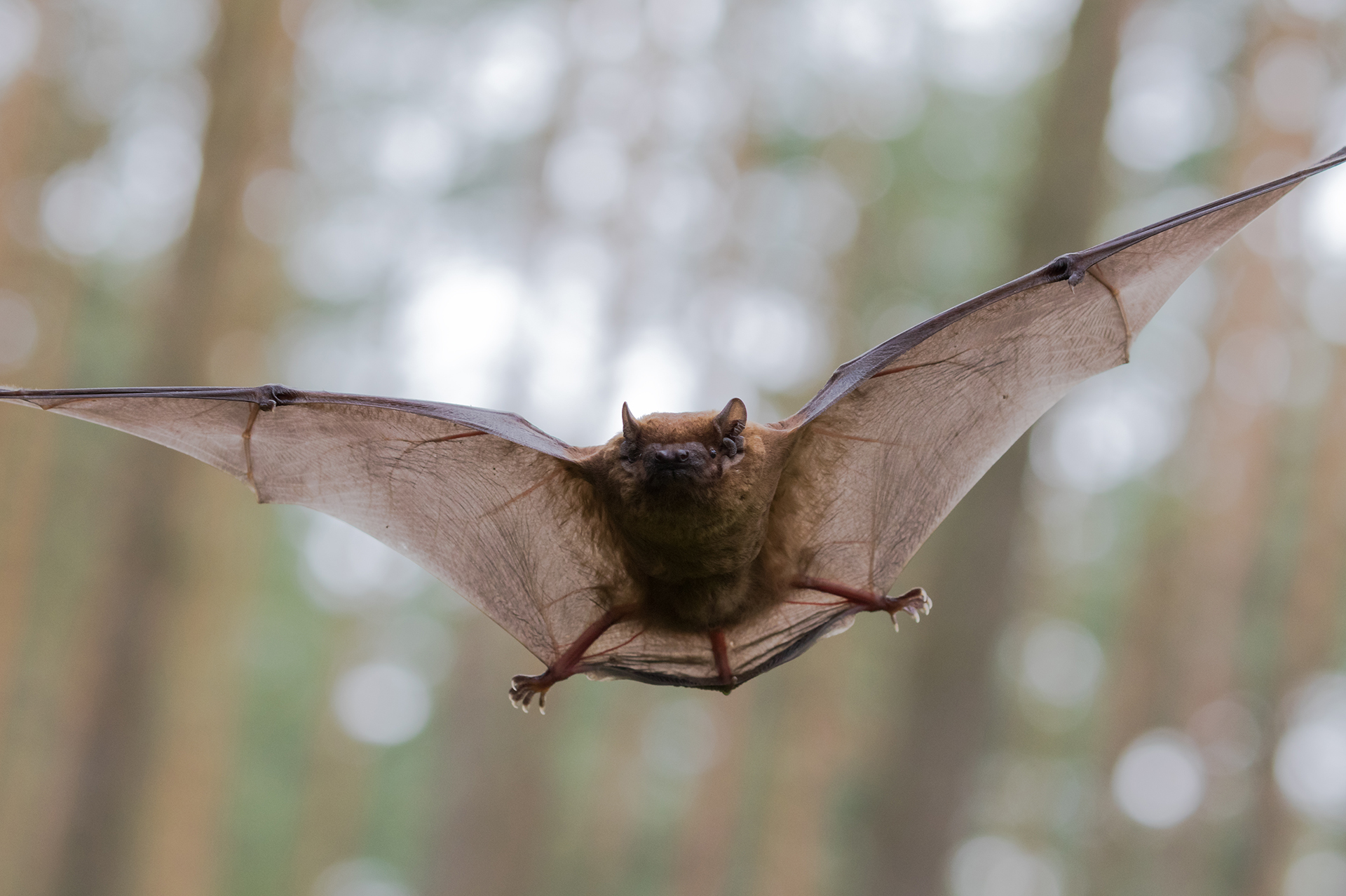Bat houses – a guide to creating a roosting box for bats
Why you should add bat houses to your garden and discover expert tips to improve success


Adding bat houses to your garden is one of the easiest jobs you can do to help to transform your backyard into a nature-friendly plot.
Of course, we all know the importance of wildlife garden ideas – they are a key part of our ecosystem and a vital part of protecting the planet. And while you might already have been feeding birds or – in the UK – have set up hedgehog houses – it is also important to spare a thought for bats.
These winged mammals have so much to offer. A single bat can eat up to 1,200 mosquitoes each hour – which makes a significant impact on mosquito population control – and surprisingly, bats are important pollinators for many plants, even some that are not pollinated by any other species.
There are 47 species of bat across the United States, but one of the most commonly sighted is the little brown bat as they habitually roost in buildings. However, they are also one of the most endangered. In many countries around the world, bats are protected species meaning that it is illegal to disturb roosting bats. 'In North America, bats have protections in their natural environments and some laws protect bats when they occupy a home or building,' explains experts at Bat Conservation International.
Here, we look at the benefits of bat houses and roosting boxes.
Why should I install bat houses?
You should install bat houses in your garden because they offer a safe place for bats to roost and raise their young. Bat populations are on the decline and therefore, it is more important than ever to protect them.
Like so many animals, bats are becoming increasingly at risk due to deforestation and urbanization. ‘Bats roost in a variety of different places, from holes in trees, to churches and other buildings, to caves, mines and railway tunnels,' explains Ness Amaral-Rogers, science communications executive at the RSPB. ‘But as old trees are cut down, buildings disturbed and mines filled in, bats are left with very few natural roost sites.’
Design expertise in your inbox – from inspiring decorating ideas and beautiful celebrity homes to practical gardening advice and shopping round-ups.
Thankfully, we can help to combat this by providing artificial roosts, also known as bat houses.
Unfortunately, if you already have bats roosting in your roof, adding bat houses are unlikely to lure them away, says Douglas Kent, technical and research director at the Society for the Protection of Ancient Buildings. ‘However, it’s still a good idea, especially as it’s generally considered that the loss of bats’ natural habitat is what leads to them using buildings in the first place.’

What is a bat box for?
A bat box is similar to a bird box in size, however, instead of having a hole in the front opening to a large box, it is composed of several small rectangular boxes (between 15mm and 25mm deep) which have been joined together. This replicates bats' natural roosts as the small spaces help to protect them from predators.
It is also vital that the wood used for your bat box has not been treated, as bats are very sensitive to chemicals, and that it has a rough, sawn surface, as this will give the bats purchase when roosting. If your wood is not already rough, use the teeth of a saw to create a surface on which the bats are able to grip.
Where should a bat box be placed?
A bat box should be placed in a sheltered location about 4m above the ground.
Whether building your own bat houses – The Wildlife Trust has a useful guide – or installing a ready-made box – Amazon sells a whole range of bat houses – its location is key.
The Bat Conservation Trust recommends that bat houses be placed in areas where bats are known to feed; positioned at least 4m above the ground, ideally on a tree trunk; away from artificial light sources and sheltered from strong winds. Ness also recommends ‘positioning your bat houses so they face between southwest and southeast and make sure there is a clear flight line in’.
If you don’t have a tree available, you can place your bat houses under the eaves of your house; bats are attracted to eaves and many older houses will already have bats roosting in their roofs.

How do you attract bats to bat houses?
You attract bats to bat houses by placing the bat box in good location: 4m above the ground and in a space where they are known to feed.
However, encouraging bats to your bat houses requires patience, it can take months or even years for a bat to find your box. However, there are a few tips and tricks to make it even more enticing. ‘Putting up more than one is recommended. Research has shown that bats are more likely to roost if you put up several boxes near each other,’ advises Ness, ‘and some foliage around the box will encourage use, such as climbing rose or honeysuckle.’
Even though it may take a while for bats to find your bat houses, they are creatures of habit. ‘Once bats find a bat box, they tend to return regularly but only use them for a few days at a time, so they need lots of roosts’ says Matt.
You will be able to tell that your bat houses are being used if there are droppings underneath it. ‘The droppings (like mouse droppings made of crumbly stock cubes) are also a very good fertiliser for your garden,’ continues Matt.

When should you put up a bat house?
You should put up a bat house in early spring or early fall. Bats rely on bat houses throughout winter, while hibernating, and during summer when they are raising their young. Therefore, you should put up your bat houses just before these busy periods when bats are searching for a space to roost. However, there is no reason you can't put them up at another time of the year, it just may take a little longer for your bat houses to become occupied.
Do you have to clean bat houses?
No, you do not have to clean a bat box, unless it has been used by a bird. Some smaller birds like to try and build their nests in the lower part of the bat box. If this is the case, leave the birds be until the end of summer and then remove the nest, clean and rehang for bats to make use of during the coming winter.
Disadvantages of bat houses
There are few disadvantages to having bat houses on your property – however, be careful not to site yours above windows or doors – the bats' droppings will make a mess around and below them; anywhere above or around a patio or decked area should be avoided for the same reasons. Away from the house where the bats can roost peacefully is best.

Having graduated with a first class degree in English Literature, Holly started her career as a features writer and sub-editor at Period Living magazine, Homes & Gardens' sister title. Working on Period Living brought with it insight into the complexities of owning and caring for period homes, from interior decorating through to choosing the right windows and the challenges of extending. This has led to a passion for traditional interiors, particularly the country-look. Writing for the Homes & Gardens website as a content editor, alongside regular features for Period Living and Country Homes & Interiors magazines, has enabled her to broaden her writing to incorporate her interests in gardening, wildlife and nature.